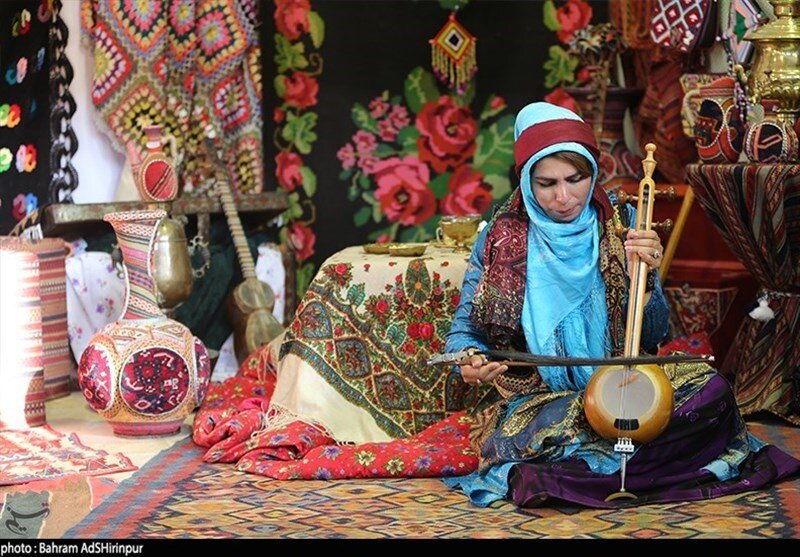
TEHRAN – Natives of 14 Iranian cities and villages, which have been inscribed as handicraft hubs by the World Crafts Council, showed off skills at the four-day Tehran fair to help define novel travel destinations.
The craftspeople put on show top examples to their routines while staging live workshops, performances, and meetings during the 15th Tehran International Tourism Exhibition held simultaneously with the 35th national handicrafts exhibition at the Tehran Permanent International Fairgrounds.
The majority of visitors welcomed the way they presented their arts as experts believe it would drastically help people to think of lesser-known destinations, IRNA reported.
“It is a good sign that tourism and handicrafts exhibitions are held simultaneously as they are the two branches of the tourism ministry,” the deputy tourism minister Pouya Mahmoudian said on Sunday.
“This year’s exhibitions have been very well received and activists from the tourism industry as well as the handicraft industry are present.”
With 14 entries, Iran ranks first globally for the number of cities and villages registered by the World Crafts Council, as China with seven entries, Chile with four, and India with three ones come next.
For instance, Shiraz is named a “world city of [diverse] handicrafts”, Malayer is a global hub for woodcarving and carved-wood furniture, while Zanjan has gained the title of a “world city of filigree”.
The value of Iran’s handicrafts exports stood at $120 million during the first eleven months of the past Iranian calendar year 1399 (March 20, 2020 – February 18, 2021), Mehr reported. The country’s handicrafts exports slumped during the mentioned months in comparison to the same period last a year earlier due to the damage the coronavirus pandemic has inflicted on global trade.
The Islamic Republic exported $427 million worth of handicrafts during the first eleven months of the calendar year 1398. Of the figure, some $190 million was earned via suitcase trade (allowed for customs-free and tax-free transfer) through 20 provinces, according to data compiled by the Ministry of Cultural Heritage, Tourism and Handicrafts. Ceramics, pottery vessels, handwoven cloths as well as personal ornamentations with precious and semi-precious gemstones are traditionally exported to Iraq, Afghanistan, Germany, the U.S., the UK, and other countries.
Currently, an increasing number of travelers are looking for something different such as spending a day in tranquil countryside, picking fresh fruits, watching rice grow, fishing by the seaside, eating traditional dishes, or even staying with locals. To put it in other words, many urban residents tend to choose rural tourism to enjoy a slow-paced lifestyle that resembles something like ‘the Internet + countryside’.
The Islamic Republic considers promoting sustainable rural tourism across the ancient country. Moreover, the World Tourism Organization sees rural tourism as a type of activity in which the visitor’s experience is related to a wide range of products generally linked to nature-based activities, agriculture, rural lifestyle, culture, angling, and sightseeing. Such tourism also possesses characteristics such as low population density, a landscape dominated by agriculture and forestry, as well as traditional social structure and lifestyle.

No comments:
Post a Comment